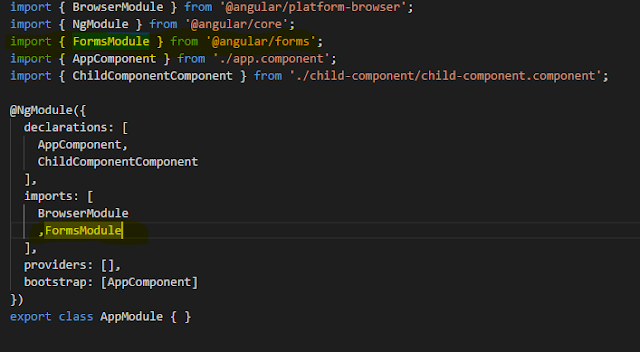Output and EventEmitter used together to pass data from Child component
to Parent component. EventEmitter emits the data that can be received by parent
component. In the below example We have two components appComponent(parent
component) and childComponent(child components) child component contains
textbox and parent component shows the data when user enters in the child
component. Here we have used Two-way binding, we can also use ngModelChange event.
That's It !!
Example:
child-component.component.html
<div style="border:1px solid chocolate; width:300px; height: 120px; padding: 10px 10px">
<b> Child component</b><br><br>
Type here : <input type="text"
[(ngModel)]='inputValue'
/>
</div>
child-component.component.ts
import
{ Component, OnInit, Output, EventEmitter } from
'@angular/core';
@Component({
selector: 'child-component',
templateUrl: './child-component.component.html',
styleUrls: ['./child-component.component.css']
})
export
class ChildComponentComponent{
private
_inputValue:string;
get inputValue(){
return this._inputValue;
}
set
inputValue(value:string){
this._inputValue=value;
this.userName.emit(this._inputValue);
}
@Output() userName :
EventEmitter<string>= new
EventEmitter<string>();
}
app.component.html
<div style="border: 1px solid chocolate;
height: 250px; width:
350px; padding: 10px 10px"
>
<span> <b>Parent component</b></span>
<br><br>
you entered {{messageFromChild}}
<br><br>
<child-component (userName)='OnDataChange($event)'></child-component>
</div>
app.component.ts
import { Component } from '@angular/core';
@Component({
selector: 'app-root',
templateUrl: './app.component.html',
styleUrls: ['./app.component.css']
})
export class
AppComponent {
public
messageFromChild:string;
OnDataChange(childData: string){
this.messageFromChild=childData;
}
}
Add FormsModule in the app.module.ts
That's It !!



